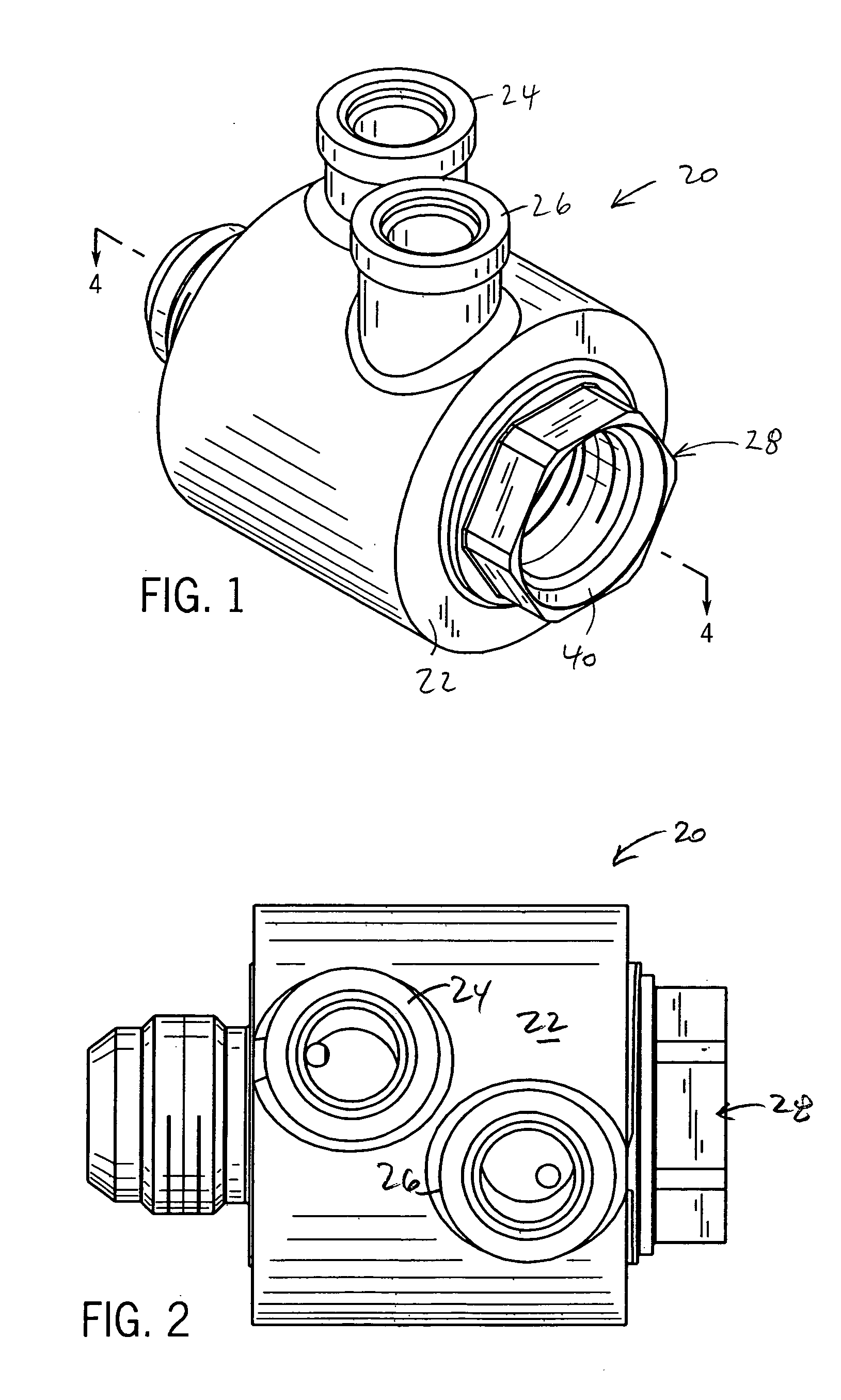Water cooled liquid fuel valve
a liquid fuel valve and water cooling technology, applied in the direction of functional valve types, turbine/propulsion fuel valves, machines/engines, etc., can solve the problems of hard on the fuel control components of the turbine fuel system, liquid fuel system remains inoperable, and coking can still be a problem, so as to achieve more consistent operation and reduce coking
- Summary
- Abstract
- Description
- Claims
- Application Information
AI Technical Summary
Benefits of technology
Problems solved by technology
Method used
Image
Examples
Embodiment Construction
[0033] The present invention provides a non-fuel liquid cooled liquid fuel valve for use in the extreme temperature and pressure environment of the fuel system of an air or ground gas turbine engine. The valve can take the form of a check valve, an air purge valve, a distributor valve, a combination air purge and distributor valve and the like. In any form, a movable valve member controls the flow of liquid fuel through the valve's fuel circuit and a separate cooling circuit circulates coolant through the valve near or alongside the valve member. Although not shown, for each embodiment of the valve suitable lines or conduit couple the valve to a water supply, which can be continuous cool water supply or a recirculated supply tank with or without external cooling. The coolant is any suitable non-fuel fluid, preferably water and preferably of a lower temperature than the liquid fuel. For simplicity, the following valve embodiments will be described as being water cooled.
[0034]FIGS. 1...
PUM
 Login to View More
Login to View More Abstract
Description
Claims
Application Information
 Login to View More
Login to View More - R&D
- Intellectual Property
- Life Sciences
- Materials
- Tech Scout
- Unparalleled Data Quality
- Higher Quality Content
- 60% Fewer Hallucinations
Browse by: Latest US Patents, China's latest patents, Technical Efficacy Thesaurus, Application Domain, Technology Topic, Popular Technical Reports.
© 2025 PatSnap. All rights reserved.Legal|Privacy policy|Modern Slavery Act Transparency Statement|Sitemap|About US| Contact US: help@patsnap.com



